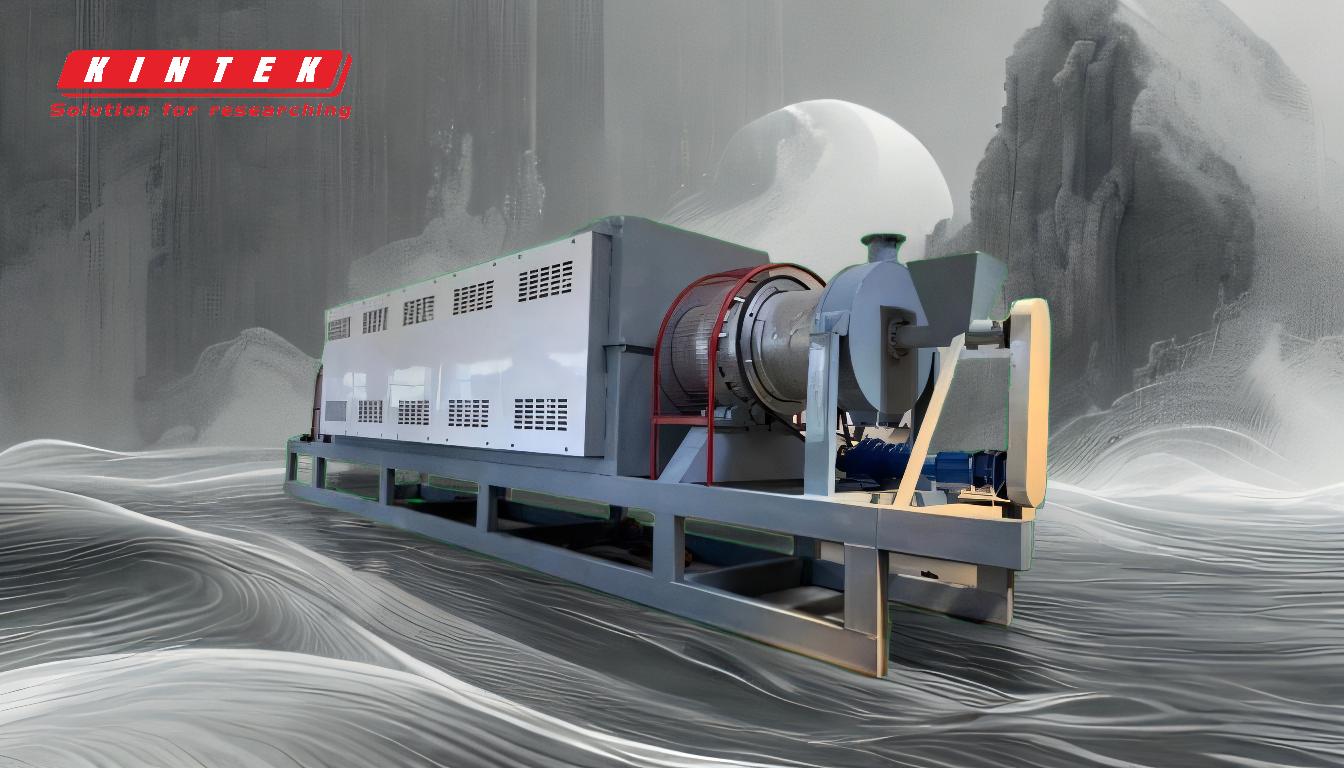Tyre pyrolysis gas, also known as syngas, is a mixture of combustible and non-combustible gases produced during the pyrolysis of tyres. The composition of this gas is complex and includes a variety of chemical compounds. The primary combustible gases found in tyre pyrolysis gas are carbon monoxide (CO), hydrogen (H2), and methane (CH4). These gases are valuable as they can be used as a source of energy to fuel the pyrolysis process itself or for other industrial applications. Additionally, the gas contains non-combustible components and volatile organic compounds (VOCs), which may require further treatment to meet environmental standards. The exact composition of the gas can vary depending on the pyrolysis conditions, such as temperature and the type of tyre being processed.
Key Points Explained:
-
Primary Combustible Gases in Tyre Pyrolysis Gas:
- Carbon Monoxide (CO): A key component of syngas, CO is a combustible gas that can be used as a fuel. It is produced during the thermal decomposition of organic materials in the absence of sufficient oxygen.
- Hydrogen (H2): Another important combustible gas, hydrogen is highly flammable and can be used in various industrial processes, including as a fuel or in chemical synthesis.
- Methane (CH4): Methane is a hydrocarbon gas that is also combustible and can be utilized as a fuel source. It is typically produced in smaller quantities compared to CO and H2 during tyre pyrolysis.
-
Non-Combustible Components:
- Nitrogen (N2): Often present in the pyrolysis gas, nitrogen is an inert gas that does not contribute to the combustion process.
- Carbon Dioxide (CO2): A byproduct of combustion, CO2 is a non-combustible gas that may be present in the pyrolysis gas, especially if there is some oxidation during the process.
-
Volatile Organic Compounds (VOCs):
- Benzene, Toluene, and Xylene: These are common VOCs found in pyrolysis gas. They are aromatic hydrocarbons that can be harmful if released into the environment without proper treatment.
- Other Hydrocarbons: The gas may also contain other aliphatic and aromatic hydrocarbons, which can vary depending on the pyrolysis conditions and the composition of the tyres.
-
Factors Influencing Gas Composition:
- Pyrolysis Temperature: The temperature at which pyrolysis occurs significantly affects the composition of the gas. Higher temperatures tend to produce more CO and H2, while lower temperatures may result in a higher concentration of methane and other hydrocarbons.
- Type of Tyre: Different types of tyres (e.g., passenger car tyres, truck tyres) have varying compositions, which can influence the gas composition. For example, tyres with higher natural rubber content may produce more methane.
-
Environmental and Safety Considerations:
- Emission Control: The presence of VOCs and other potentially harmful gases necessitates the use of a de-dusting system to purify the emission gas, ensuring it meets environmental standards such as those set by the EU.
- Energy Recovery: The combustible gases in the pyrolysis gas can be recycled and used to heat the pyrolysis reactor, making the process more energy-efficient and sustainable.
-
Applications of Tyre Pyrolysis Gas:
- Fuel for Pyrolysis Reactor: The combustible gases can be directly used to heat the reactor, reducing the need for external energy sources.
- Industrial Use: The syngas can be utilized in various industrial applications, including as a feedstock for chemical synthesis or as a fuel for power generation.
In summary, tyre pyrolysis gas is a complex mixture of combustible and non-combustible gases, including carbon monoxide, hydrogen, methane, nitrogen, carbon dioxide, and various volatile organic compounds. The composition of this gas is influenced by factors such as pyrolysis temperature and the type of tyre being processed. Proper handling and treatment of the gas are essential to ensure environmental compliance and to maximize its utility as a source of energy.
Summary Table:
| Component | Type | Details |
|---|---|---|
| Carbon Monoxide (CO) | Combustible Gas | Used as fuel; produced during thermal decomposition in low oxygen conditions. |
| Hydrogen (H2) | Combustible Gas | Highly flammable; used in industrial processes and chemical synthesis. |
| Methane (CH4) | Combustible Gas | Hydrocarbon gas; produced in smaller quantities compared to CO and H2. |
| Nitrogen (N2) | Non-Combustible | Inert gas; does not contribute to combustion. |
| Carbon Dioxide (CO2) | Non-Combustible | Byproduct of combustion; may be present due to oxidation. |
| VOCs | Volatile Compounds | Includes benzene, toluene, xylene; requires treatment for environmental safety. |
| Factors Affecting Composition | - | Pyrolysis temperature and tyre type influence gas composition. |
Learn more about tyre pyrolysis gas and its applications—contact our experts today!









